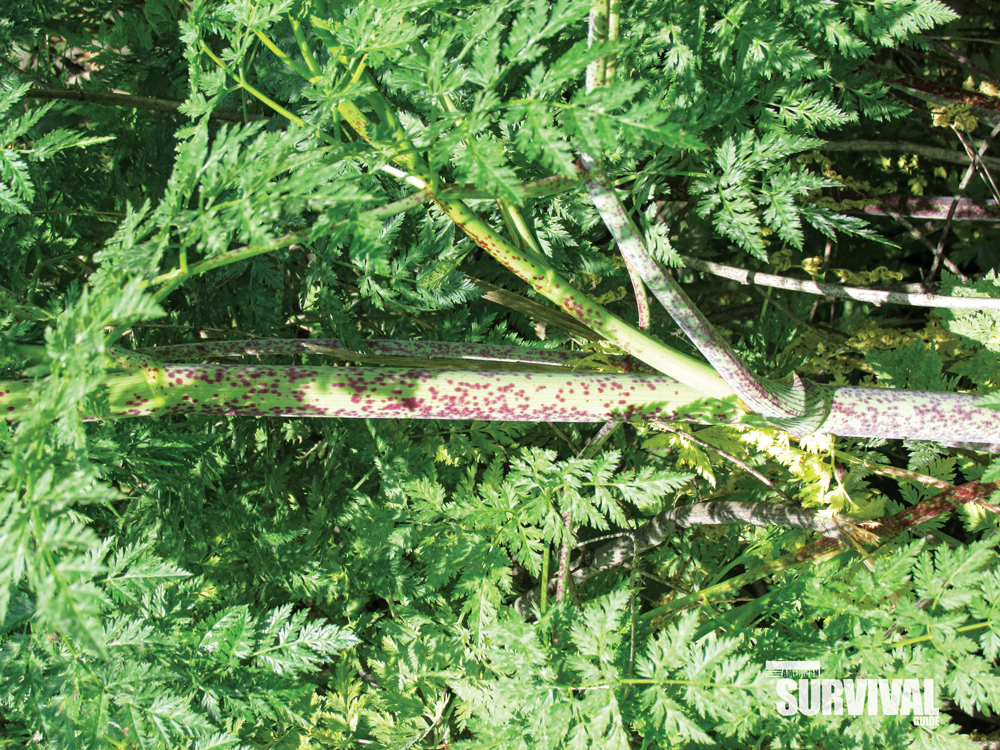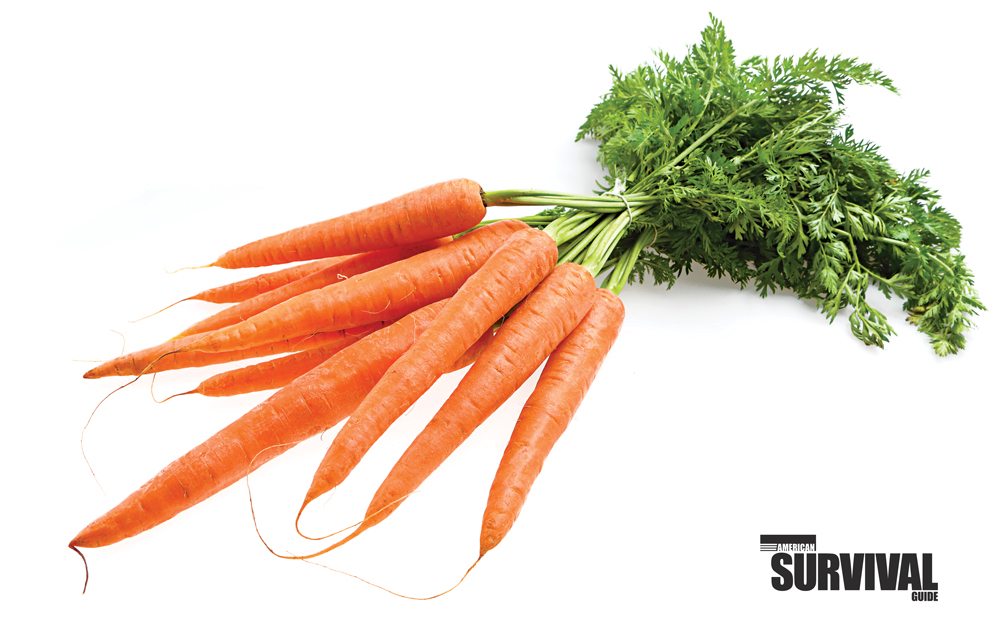Wild Carrots
These parsley family members provide a number of nutritional and medicinal benefits.
Name: Wild Carrot
(Daucus Carota)
Wild carrot is a member of the parsley family (Apiaceae), which has about 300 genera worldwide and about 3,000 species. Many of these are cultivated for food, spice and medicine, but some are highly toxic. Never eat anything that looks carrot- or parsley-like if you haven’t positively identified it. There are about 20 species of Daucus worldwide.
Description
If you’ve ever grown carrots in your garden, you’ll recognize wild carrot in the field; it’ll typically be smaller. The leaves are pinnately dissected, with the leaflet segments linear to lanceolate—just like the leaves of a garden carrot. The flowers are formed in umbels (an umbel resembles the spokes of an umbrella) of white flowers, with a tiny, central, purple flower. As the umbel matures, it closes up and has the appearance of a bird’s nest.
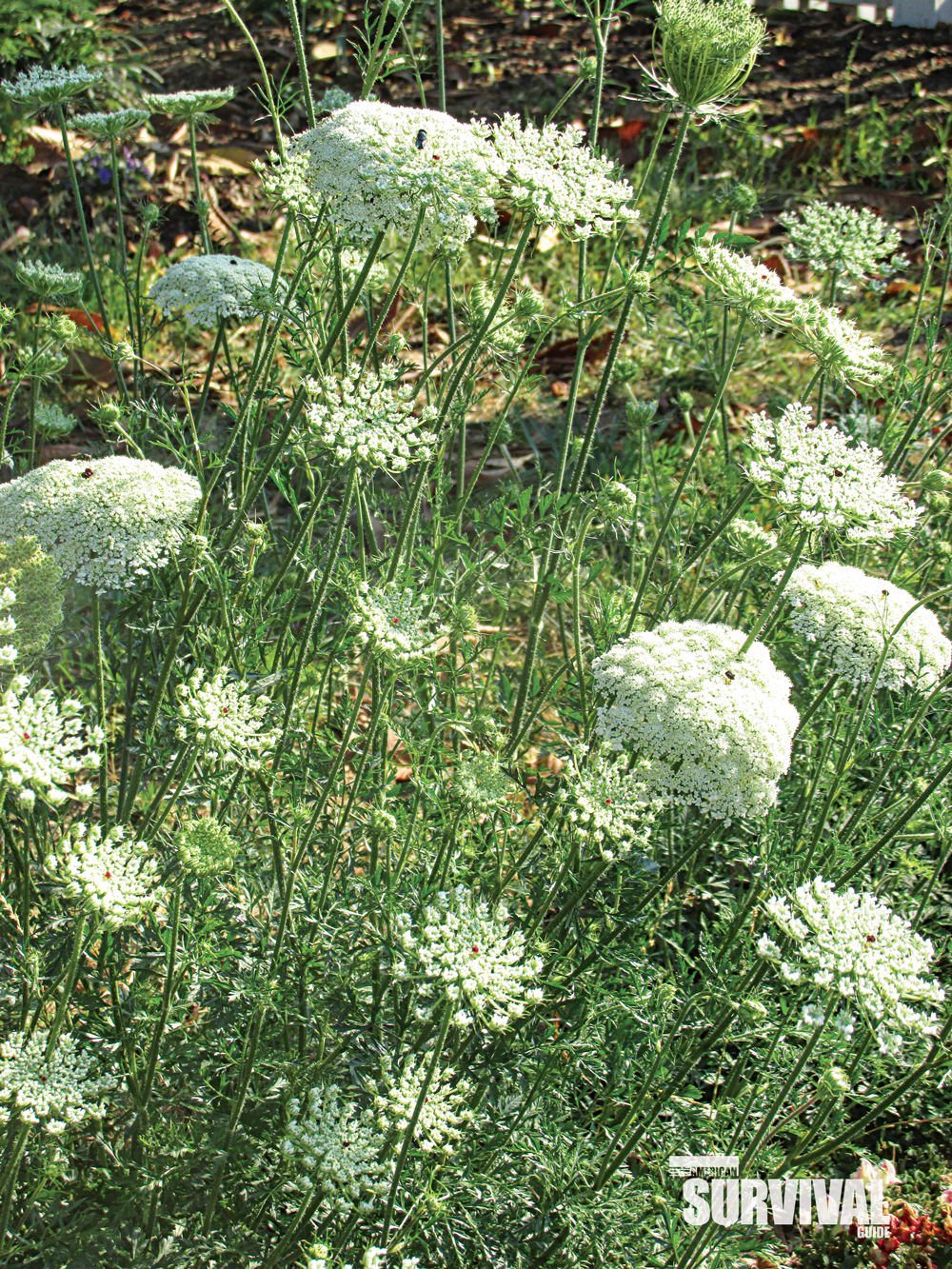
If you find a plant you believe might be a wild carrot, crush a bit of a leaf and scrape a bit of the root. Do they smell like carrot? The root of the wild carrot is white, not orange but, if you scratch it, you’ll get that very characteristic carrot aroma.
Where Found
Wild carrots are fairly widespread in North America. Our domesticated carrots all come from this wild relative, which originated in the Middle East. You’re likely to find wild carrots in open fields, on the fringes of farms and even in backyards.
Uses
The roots can be dug, washed and eaten like garden carrots, although they’re usually tough. (This was one of the first wild foods I learned to use. It was always a feeling of great mystery and pleasure to dig into a wild field and pull up one of these white roots. Was it a farm carrot gone feral? Probably. Even so, it awakened some distant memory of “hunter-gatherer”!)
Sometimes, I simply peel the outer part of the taproot and discard the very tough inner core. The roots, if tender enough, can be sliced thin and added to salads, but they’re usually best added to soups, stews and various cooked dishes.
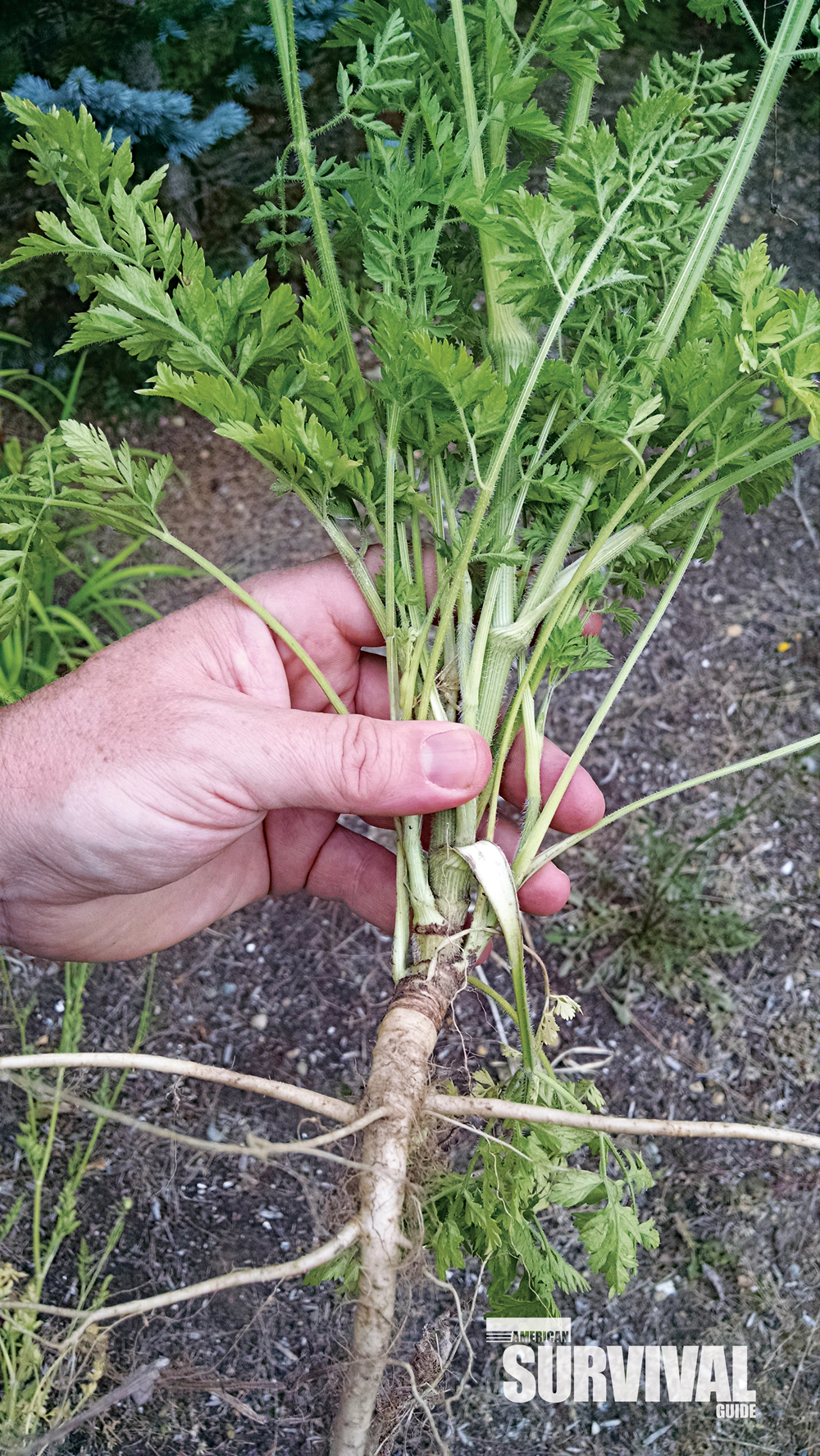
Generally, when I’ve found a wild carrot, its entire root can be quite tough. Some wild carrots aren’t worth bothering with. However, if it’s young enough, I simply slice the entire root thin and cook with it. It adds a good flavor to soups, although it lacks the carotene of commercial carrots.
First-year leaves can be chopped and tossed into a salad. The seeds of the mature plant are very aromatic and can be used as a seasoning in stews or dried and used as a spice (to taste).
Processing
Usually, only the outer layer of the root is eaten, so processing requires washing the soil from the root and peeling off the edible outer layer.
When to Harvest/Availability
You’ll generally notice wild carrots growing from springtime into summer, and so this is when you’ll be collecting them. Their roots are most tender before the plant flowers.
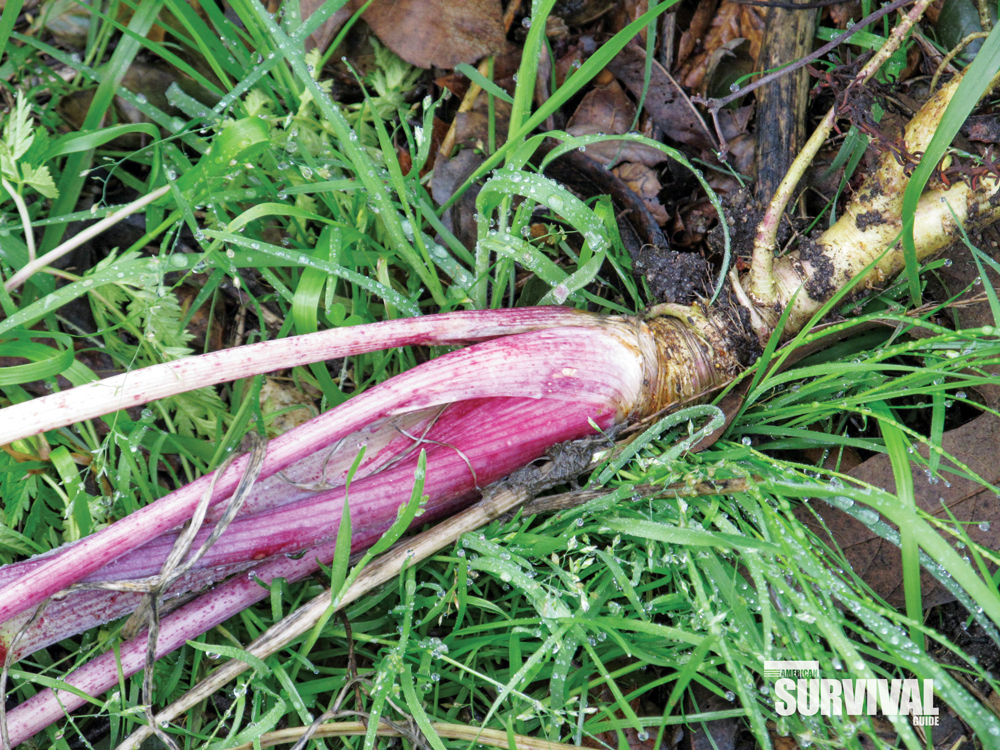
Medicine/Nutrition
Wild carrot has many reported benefits.
- As an aromatic herb, it acts as a diuretic, soothing the digestive tract and stimulating the uterus.
- An infusion of the plant has been used to treat various complaints, including digestive disorders, kidney and bladder diseases, and soft-tissue swelling.
- Carrot leaves consist of significant amounts of porphyrins, which encourage the pituitary gland and lead to the release of increased levels of sex hormones.
- A warm-water infusion of the flowers has been used in the treatment of diabetes.
- The seeds have been used as a “morning-after” contraceptive. Although there’s some evidence to support this, it shouldn’t be relied upon, because its effectiveness can vary.
Despite their lack of pigmentation, white carrots are very good for you. According to nutritionists, they contain phytochemicals that can help reduce the risk of cancer and stroke and might reduce the risk of atherosclerosis (the buildup of fatty tissue on artery walls). White carrots also contain dietary fiber that helps fight against colon cancer.
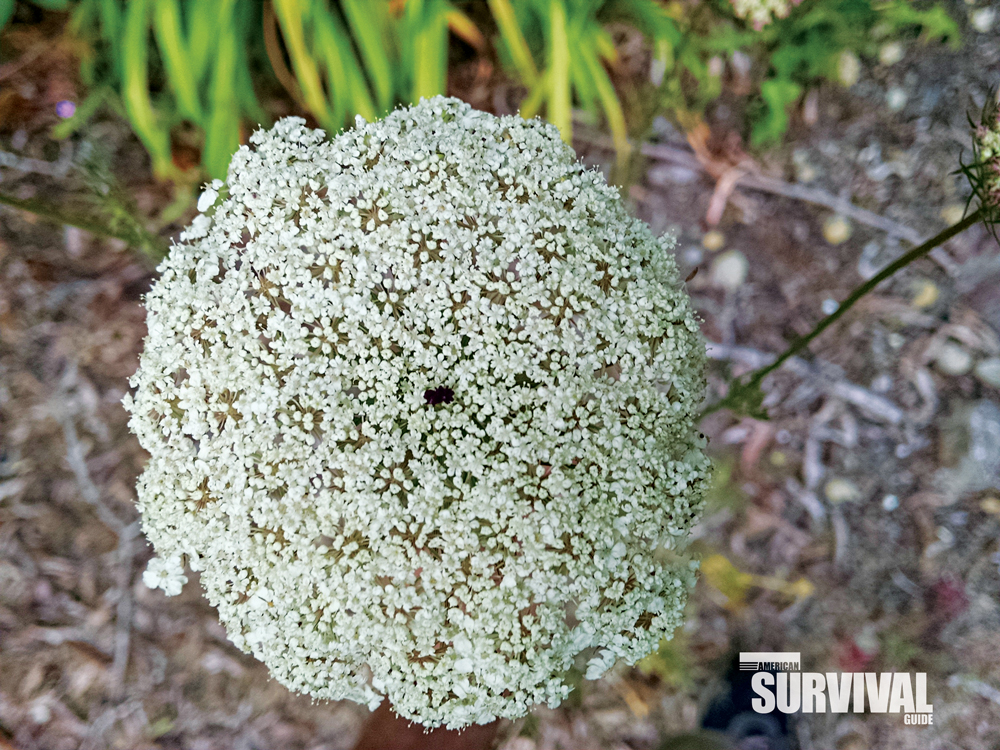
According to the U.S. Department of Agriculture, 100 grams of wild carrot contain 16,706 IU of vitamin A, 5.9 mg of vitamin C, 33 mg of calcium, 35 mg of phosphorus, 320 mg of potassium and smaller amounts of a number of other vitamins and minerals.
Other Uses
The dried flower stalks are sometimes desired in floral arrangements.
Advice for Growing
If you grow carrots and leave one in the ground, it’ll continue to grow, year after year, from the root.
Cautions
The carrot family contains some very good food and spices. However, be absolutely certain you have a carrot and not poison hemlock—both are members of this family. The wild carrot plant has that very distinctive carrot aroma, along with fine hairs on the stalk.
About ASG’s Plant Advisor
Christopher Nyerges has been teaching ethnobotany since 1974. He’s the author of Guide to Wild Foods and Useful Plants, Foraging Wild Edible Plants of North America, and other books on the uses of wild plants. He can be reached at SchoolofSelf-Reliance.com.
